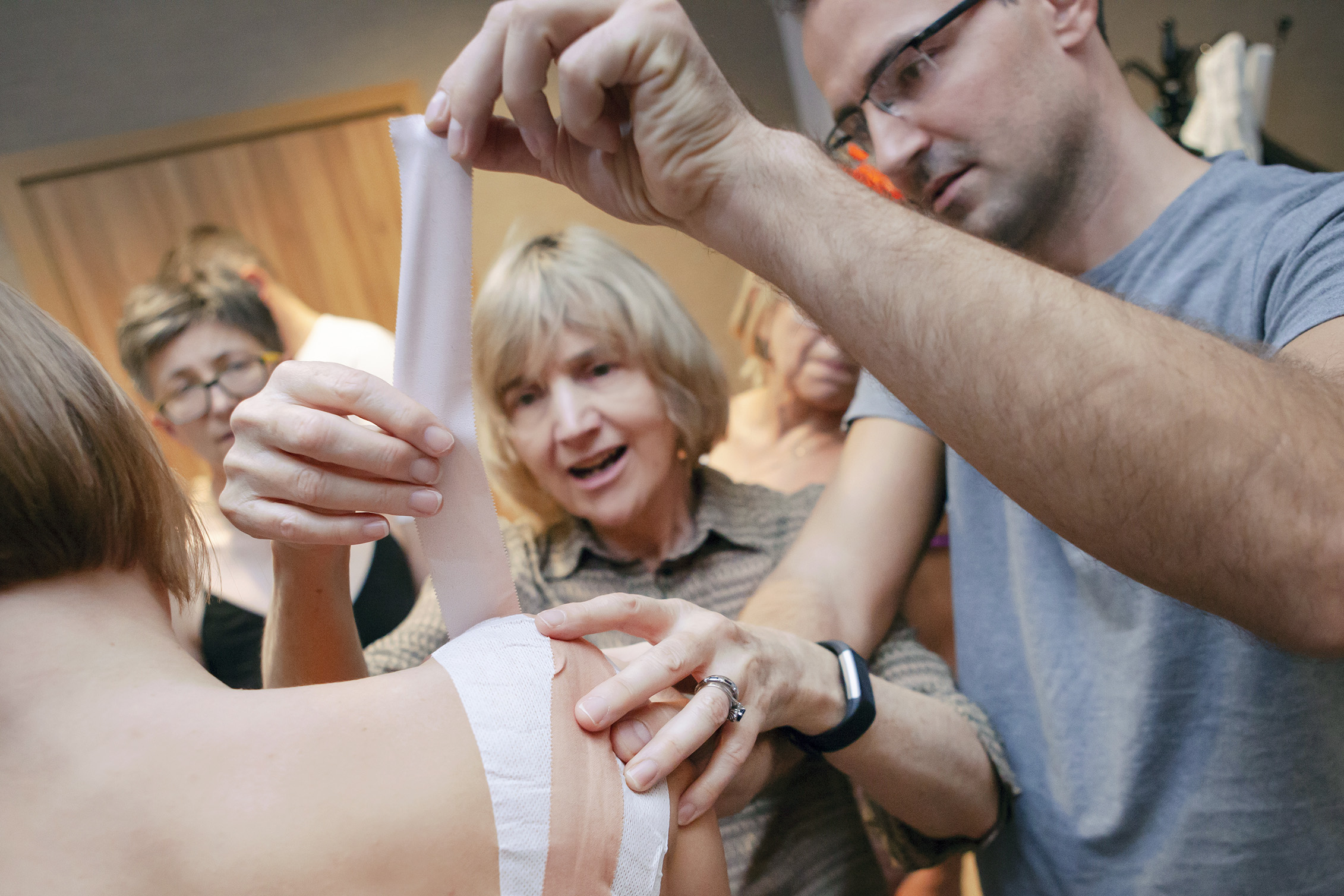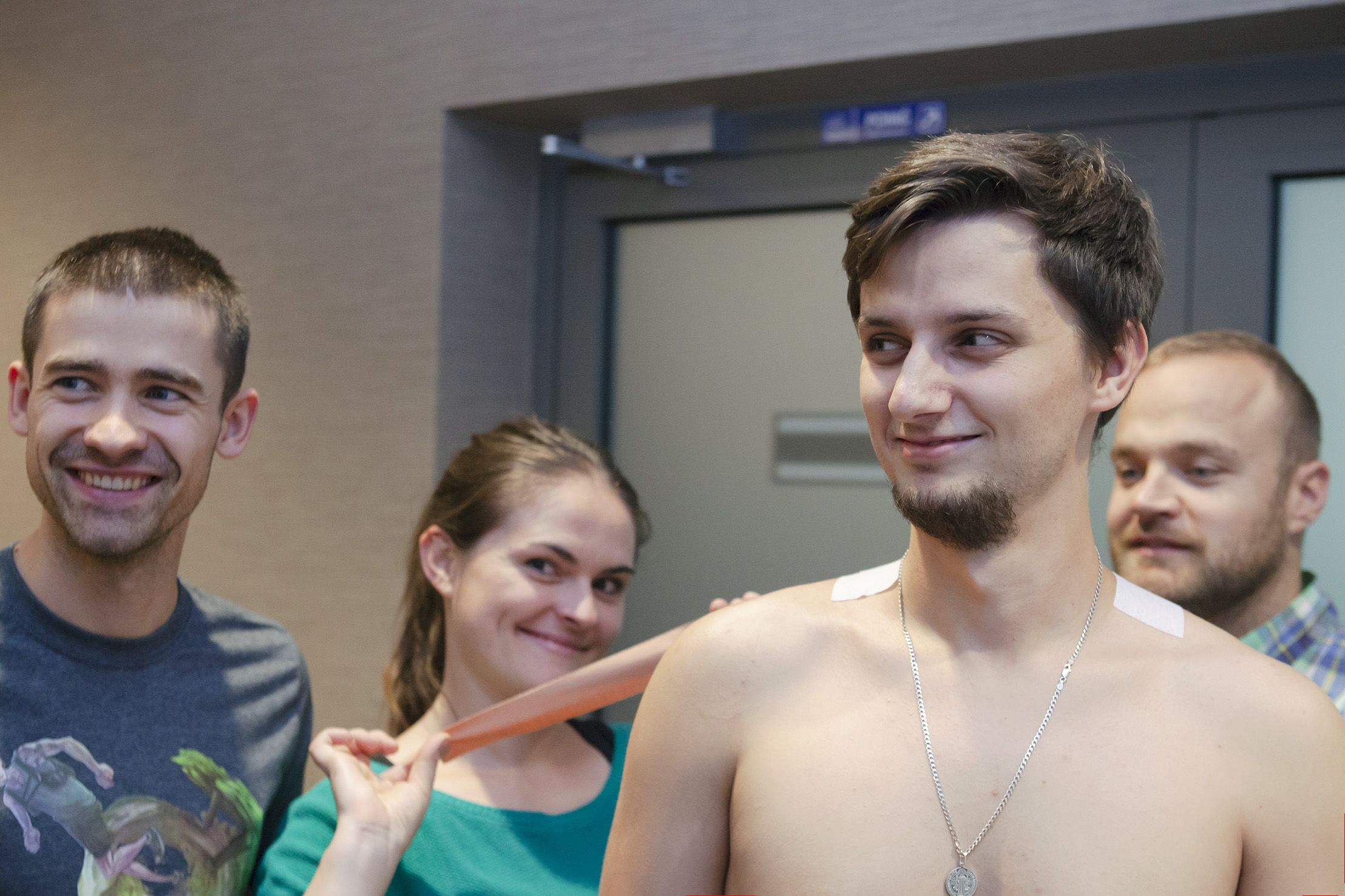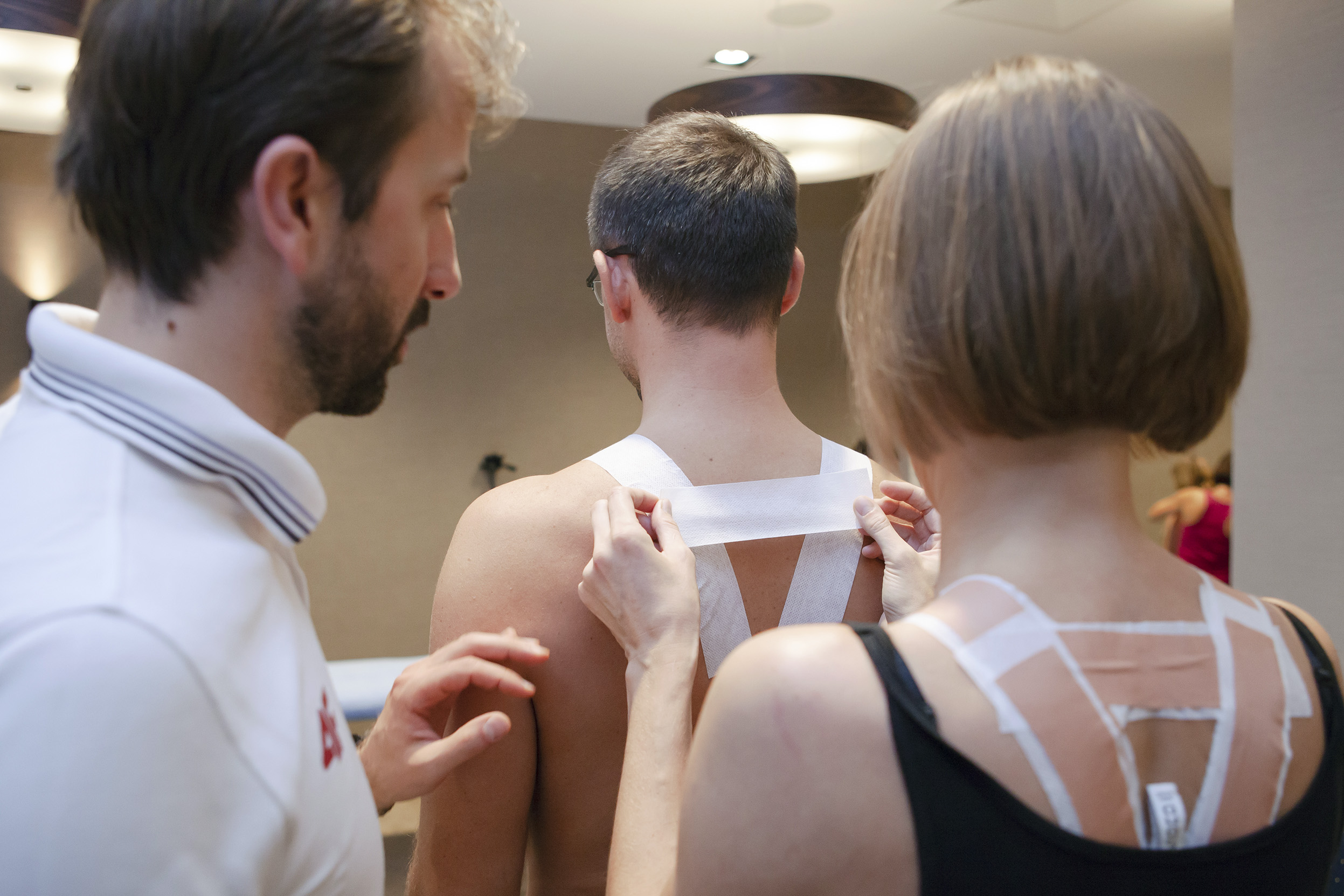


Taping – (taping).
A combination of classical physiotherapy involving physical impact on the body with the body’s natural self-healing processes.
One of the most widely used therapeutic methods not only in sports, but also in everyday work with patients. It involves applying to the body in a strictly defined way, tape with the appropriate structure and stretching properties. The main task of the tape is to regulate muscle tension at the site of application. This has the effect of reducing pain, thereby increasing the range of motion and also muscle strength despite the dysfunction.
Dynamic patching is a versatile, non-invasive method of pain management. The mechanism of action of the patch is simple. Following an injury to a muscle, an inflammatory focus develops, followed by swelling, reflex stiffness. The space between the skin and the muscle (fascia) is significantly reduced, causing pressure on lymphatic vessels as well as pain receptors. The task of the tape is to stretch, lifting the skin to increase the space, thus creating conditions for improving the work of the lymphatic system, producing a strong analgesic effect.
Rigid taping involves taping a part of the body – usually within a selected joint. As a result, this joint is protected from possible injury and stabilized. This is important not only in prevention, but also in the treatment of certain joint injuries. An important aspect of using this method is to change the direction of the muscle force. The application makes it possible to protect the painful area and direct the muscle force in a direction other than the painful one. As a result, one notices the stabilization of the joint and a reduction in the pain that occurs.
